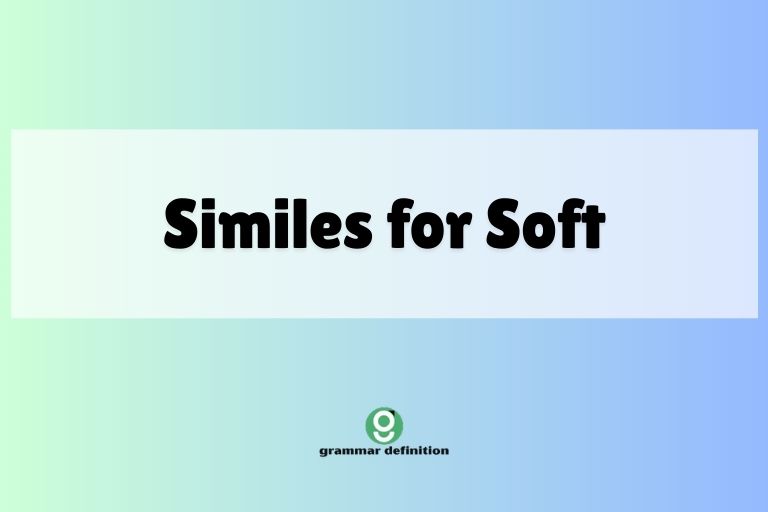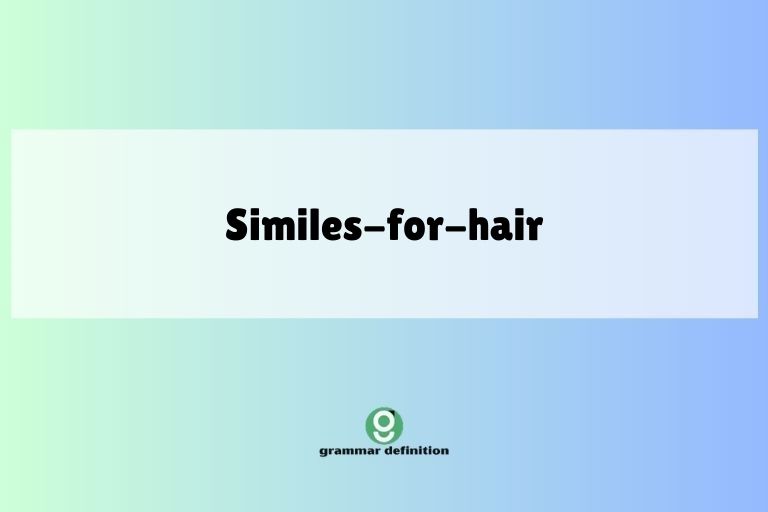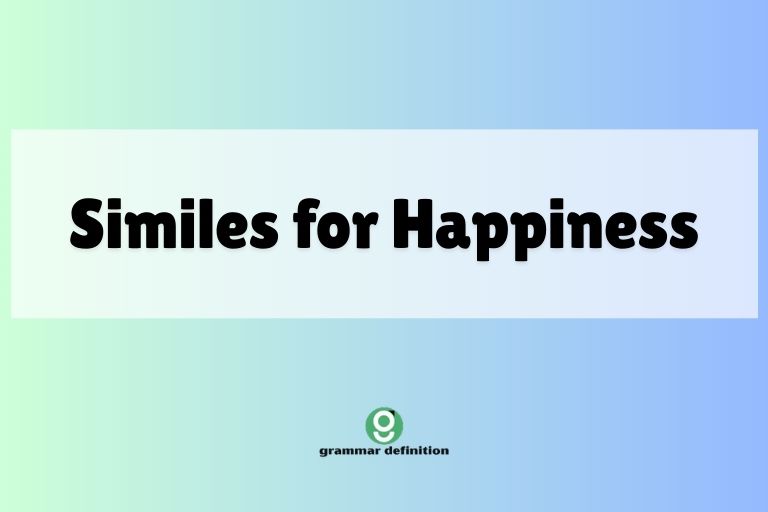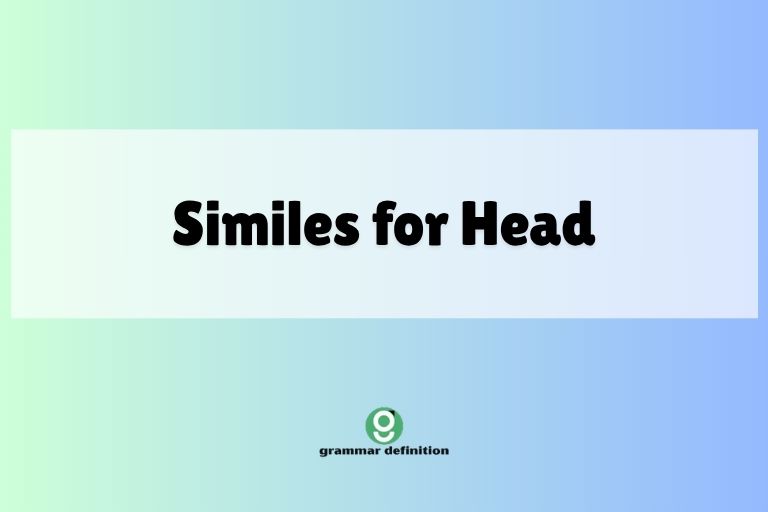Similes for Soft: Enhancing Descriptions with Figurative Language

Similes are powerful tools in the English language that allow us to create vivid and relatable descriptions. Understanding how to use similes effectively, especially when describing softness, can significantly enhance your writing and communication skills.
This article delves into the world of similes for “soft,” exploring their definition, structure, usage, and common pitfalls. Whether you’re a student, writer, or simply someone looking to improve their English proficiency, this comprehensive guide will equip you with the knowledge and practice you need to master this essential aspect of figurative language.
Table of Contents
- Introduction
- Definition of Simile
- Structural Breakdown of Similes
- Categories of Similes for “Soft”
- Examples of Similes for “Soft”
- Usage Rules for Similes
- Common Mistakes with Similes
- Practice Exercises
- Advanced Topics in Similes
- Frequently Asked Questions
- Conclusion
Definition of Simile
A simile is a figure of speech that directly compares two different things using the words “like” or “as.” The purpose of a simile is to create a more vivid and descriptive image in the reader’s mind by associating the subject with something familiar and relatable. Similes are fundamental to descriptive writing and are frequently used in both prose and poetry to evoke emotions, paint pictures, and make abstract concepts more understandable.
In essence, a simile asserts a similarity between two dissimilar entities. It’s a powerful tool for adding depth and texture to your writing by drawing parallels that might not be immediately apparent.
By using similes, you can make your descriptions more engaging, memorable, and impactful.
Structural Breakdown of Similes
The basic structure of a simile involves three key components: the subject (the thing being described), the linking word (“like” or “as”), and the comparative element (the thing the subject is being compared to). Understanding this structure is crucial for creating effective and grammatically correct similes.
The formula for a simile can be represented as: Subject + Linking Word + Comparative Element. For example, in the simile “The cotton was as soft as a cloud,” “cotton” is the subject, “as” is the linking word, and “a cloud” is the comparative element. The strength of a simile lies in the relevance and impact of the comparative element, which should evoke a clear and meaningful image in the reader’s mind.
A simile can also be structured with “like.” For example, “Her skin felt like velvet.” Here, “her skin” is the subject, “like” is the linking word, and “velvet” is the comparative element.
Categories of Similes for “Soft”
Similes for “soft” can be categorized based on the specific aspect of softness they aim to describe. These categories include:
- Softness to the Touch: These similes focus on how something feels when touched, emphasizing its gentle or delicate texture.
- Soft Appearance: These similes describe the visual softness of something, often related to its color, shape, or overall appearance.
- Soft Sounds: These similes are used to describe sounds that are gentle, quiet, and soothing.
- Soft Character: These similes describe a person’s gentle, kind, or compassionate nature.
Examples of Similes for “Soft”
The following sections provide extensive examples of similes for “soft,” categorized by the aspect of softness they describe. Each category includes a table with numerous examples to illustrate the variety and effectiveness of these figurative expressions.
Similes Describing Softness to the Touch
These similes focus on the tactile sensation of softness. They often compare the subject to materials known for their gentle and delicate texture.
The table below provides numerous examples of similes that describe softness to the touch. Each simile aims to evoke a specific feeling of gentleness and delicacy.
| Simile | Explanation |
|---|---|
| As soft as a baby’s skin | Emphasizes the delicate and smooth texture of a baby’s skin. |
| Like a feather gently falling | Suggests a light and airy touch. |
| Soft like velvet | Compares the texture to the luxurious and smooth fabric. |
| As soft as a cloud | Evokes a light, airy, and fluffy sensation. |
| Like a whisper against your cheek | Suggests a gentle and almost imperceptible touch. |
| As soft as cashmere | Compares the texture to the fine and luxurious wool. |
| Like silk gliding over skin | Evokes a smooth and luxurious feeling. |
| As soft as down feathers | Emphasizes the light and fluffy texture of down feathers. |
| Like a gentle breeze | Suggests a light and soothing touch. |
| As soft as a kitten’s fur | Compares the texture to the soft and fluffy fur of a kitten. |
| Like a plush blanket | Evokes a feeling of warmth and comfort. |
| As soft as cotton candy | Compares the texture to the light and airy confection. |
| Like a mother’s gentle caress | Suggests a tender and loving touch. |
| As soft as rose petals | Compares the texture to the delicate and smooth petals of a rose. |
| Like fine sand slipping through fingers | Evokes a smooth and almost ethereal feeling. |
| As soft as a bunny’s ear | Compares the texture to the soft and velvety ear of a bunny. |
| Like angel’s wings brushing by | Suggests an otherworldly and gentle touch. |
| As soft as a newborn’s touch | Emphasizes the delicate and innocent touch of a newborn. |
| Like a soft, warm towel | Evokes a feeling of comfort and warmth. |
| As soft as a lamb’s wool | Compares the texture to the soft and fluffy wool of a lamb. |
| Like a gentle rain on parched earth | Suggests a soothing and comforting sensation. |
| As soft as freshly fallen snow | Compares the texture to the light and powdery snow. |
| Like a lover’s soft embrace | Evokes a feeling of warmth and tenderness. |
| As soft as a dandelion clock | Compares the texture to the delicate and fragile seed head of a dandelion. |
| Like a gentle stream flowing over rocks | Suggests a smooth and continuous touch. |
| As soft as a baby chick’s down | Compares the texture to the soft and fluffy down of a baby chick. |
| Like a warm hug | Evokes a feeling of comfort and security. |
| As soft as a summer breeze | Compares the texture to the gentle and refreshing breeze. |
| Like a soothing balm | Suggests a calming and relieving touch. |
Similes Describing Soft Appearance
These similes focus on the visual aspect of softness, often referring to colors, shapes, or overall aesthetic impressions. They help to paint a picture of gentle and delicate visual qualities.
The table below provides examples of similes that describe soft appearance. These similes aim to create visual imagery of gentleness and delicacy.
| Simile | Explanation |
|---|---|
| As soft as a pastel painting | Emphasizes the gentle and muted colors of a pastel painting. |
| Like a watercolor wash | Suggests a light and delicate color. |
| As soft as the morning mist | Evokes a hazy and ethereal appearance. |
| Like a blurred photograph | Suggests a gentle and indistinct visual. |
| As soft as a faded memory | Compares the appearance to something that is gently indistinct and nostalgic. |
| Like a dream slowly dissolving | Suggests a fleeting and gentle visual. |
| As soft as moonlight on water | Evokes a shimmering and gentle visual. |
| Like a gentle sunrise | Suggests a gradual and soft illumination. |
| As soft as a cloud’s edge | Compares the appearance to the diffused and gentle edge of a cloud. |
| Like a hazy horizon | Suggests a distant and indistinct visual. |
| As soft as a whisper of color | Emphasizes the subtle and gentle hues. |
| Like a gentle snowfall | Suggests a quiet and delicate visual. |
| As soft as a muted photograph | Compares the appearance to a photograph with subdued colors. |
| Like a gentle filter on reality | Suggests a softened and more pleasing visual. |
| As soft as a faded tapestry | Compares the appearance to a tapestry with muted and worn colors. |
| Like a sheer curtain in sunlight | Suggests a light and translucent visual. |
| As soft as the glow of twilight | Evokes a warm and gentle illumination. |
| Like a pastel sunset | Suggests soft and muted colors. |
| As soft as a watercolor sky | Compares the appearance to a sky painted with gentle watercolor hues. |
| Like a diffused light | Suggests a gentle and softened illumination. |
| As soft as a gentle haze | Compares the appearance to a light and indistinct haze. |
| Like a distant mirage | Suggests an elusive and gentle visual. |
| As soft as a faded floral print | Compares the appearance to a floral print with muted and gentle colors. |
| Like a softened image in a dream | Suggests a gentle and indistinct visual. |
| As soft as a gentle glowworm’s light | Compares the appearance to a tiny and gentle light. |
| Like a muted film reel | Suggests a visual with softened colors and tones. |
| As soft as a gentle fog rolling in | Evokes a hazy and indistinct visual. |
Similes Describing Soft Sounds
These similes are used to describe sounds that are gentle, quiet, and soothing. They often compare the sound to natural elements or comforting noises.
The table below provides examples of similes that describe soft sounds. These similes aim to evoke a sense of tranquility and gentleness.
| Simile | Explanation |
|---|---|
| As soft as a whisper | Emphasizes the quiet and gentle nature of the sound. |
| Like a lullaby sung softly | Suggests a soothing and comforting sound. |
| As soft as the rustle of leaves | Evokes a gentle and natural sound. |
| Like the gentle lapping of waves | Suggests a calming and rhythmic sound. |
| As soft as a sigh | Compares the sound to a quiet and gentle exhalation. |
| Like a gentle breeze through the trees | Suggests a light and airy sound. |
| As soft as the purring of a cat | Evokes a comforting and gentle sound. |
| Like the distant murmur of a stream | Suggests a quiet and continuous sound. |
| As soft as the falling of snow | Compares the sound to the quiet and gentle descent of snow. |
| Like a gentle rain on the roof | Suggests a soothing and rhythmic sound. |
| As soft as a baby’s coo | Evokes a gentle and innocent sound. |
| Like the gentle chime of a bell | Suggests a delicate and melodious sound. |
| As soft as a whispered secret | Compares the sound to a quiet and intimate murmur. |
| Like the gentle hum of a bee | Suggests a quiet and natural sound. |
| As soft as the distant call of an owl | Compares the sound to a quiet and mysterious call. |
| Like the gentle strumming of a guitar | Suggests a soothing and melodic sound. |
| As soft as a gentle flute melody | Evokes a delicate and airy sound. |
| Like the quiet turning of pages | Suggests a soft and unobtrusive sound. |
| As soft as the ticking of a clock in the distance | Compares the sound to a quiet and rhythmic ticking. |
| Like the gentle rustling of silk | Suggests a smooth and delicate sound. |
| As soft as a gentle harp’s strings | Compares the sound to a delicate and ethereal melody. |
| Like the quiet patter of little feet | Suggests a soft and gentle sound. |
| As soft as a gentle sigh of relief | Compares the sound to a quiet and relieved exhalation. |
| Like the distant echo of a song | Suggests a faint and gentle sound. |
| As soft as the murmur of a prayer | Compares the sound to a quiet and reverent murmur. |
Similes Describing Soft Character
These similes describe a person’s gentle, kind, or compassionate nature. They often compare the person’s character to elements known for their gentleness and kindness.
The table below provides examples of similes that describe soft character. These similes aim to evoke a sense of gentleness and compassion.
| Simile | Explanation |
|---|---|
| As soft as a lamb | Emphasizes the gentle and innocent nature of the person. |
| Like a gentle breeze | Suggests a calming and soothing presence. |
| As soft as a mother’s touch | Evokes a tender and caring nature. |
| Like a comforting blanket | Suggests a warm and supportive presence. |
| As soft as a whispered promise | Compares the character to a gentle and reassuring commitment. |
| Like a gentle stream flowing through a meadow | Suggests a peaceful and harmonious nature. |
| As soft as a forgiving heart | Evokes a compassionate and understanding nature. |
| Like a gentle guiding light | Suggests a supportive and encouraging presence. |
| As soft as a quiet understanding | Compares the character to a gentle and empathetic nature. |
| Like a gentle hand to hold | Suggests a supportive and comforting presence. |
| As soft as a gentle rain after a drought | Evokes a refreshing and revitalizing nature. |
| Like a comforting melody | Suggests a soothing and harmonious presence. |
| As soft as a gentle word of encouragement | Compares the character to a kind and supportive nature. |
| Like a gentle embrace in a storm | Suggests a comforting and protective presence. |
| As soft as a quiet act of kindness | Compares the character to a gentle and selfless nature. |
| Like a gentle smile that lights up a room | Suggests a warm and welcoming presence. |
| As soft as a gentle soul | Evokes a kind and compassionate nature. |
| Like a gentle whisper of hope | Suggests an encouraging and uplifting presence. |
| As soft as a gentle reminder of beauty | Compares the character to a kind and appreciative nature. |
| Like a gentle bridge over troubled waters | Suggests a supportive and helpful presence. |
Usage Rules for Similes
Using similes effectively requires adherence to certain rules to ensure clarity, impact, and grammatical correctness. These rules include:
- Clarity: The comparison should be clear and easily understood by the reader. Avoid obscure or overly complex comparisons.
- Relevance: The comparative element should be relevant to the subject being described. The connection between the two should be logical and meaningful.
- Originality: While common similes can be effective, strive for originality to make your writing more engaging and memorable.
- Grammatical Correctness: Ensure that the simile is grammatically correct. The subject and comparative element should agree in number and tense.
Furthermore, avoid using clichés or overused similes, as they can weaken the impact of your writing. Instead, focus on creating fresh and imaginative comparisons that resonate with your audience.
Common Mistakes with Similes
Several common mistakes can undermine the effectiveness of similes. These include:
- Using Clichés: Overused similes like “as soft as butter” can lack impact.
- Illogical Comparisons: Comparing unrelated things that don’t make sense to the reader.
- Incorrect Grammar: Mismatched tenses or incorrect use of “like” or “as.”
- Redundancy: Stating the obvious in the comparison.
The table below illustrates these mistakes with examples, showing both incorrect and correct usage.
| Incorrect | Correct | Explanation |
|---|---|---|
| As soft as butter | As soft as a cloud of cotton | Avoid clichés; opt for more original comparisons. |
| The rock was as soft as a feather | The pillow was as soft as a feather | Ensure the comparison is logical and relevant. |
| He is like runs fast | He is like a cheetah | Use correct grammar and appropriate comparison. |
| The fabric was soft like a soft blanket | The fabric was soft like a gentle caress | Avoid redundancy; focus on evocative comparisons. |
Practice Exercises
Practice is essential for mastering the use of similes. The following exercises will help you develop your ability to create effective and imaginative similes for “soft.”
Exercise 1: Fill in the Blanks
Complete the following sentences with appropriate similes for “soft.”
| Question | Answer |
|---|---|
| 1. The baby’s skin was ____________. | As soft as a rose petal |
| 2. The blanket felt ____________. | Like a warm hug |
| 3. Her voice was ____________. | As soft as a whisper |
| 4. The snow fell ____________. | Like a gentle blanket |
| 5. The music sounded ____________. | As soft as a lullaby |
| 6. The kitten’s fur felt ____________. | Like velvet |
| 7. His touch was ____________. | As soft as a feather |
| 8. The light was ____________. | Like a gentle glow |
| 9. The breeze was ____________. | As soft as a sigh |
| 10. The cotton felt ____________. | Like a cloud |
Exercise 2: Rewrite the Sentences
Rewrite the following sentences using similes to describe the softness.
| Question | Answer |
|---|---|
| 1. The pillow was very soft. | The pillow was as soft as a cloud. |
| 2. Her hair was incredibly smooth. | Her hair felt like silk gliding through your fingers. |
| 3. The sound was very gentle. | The sound was as soft as a whisper in the wind. |
| 4. His nature was very kind. | His nature was as soft as a lamb’s. |
| 5. The fabric was extremely delicate. | The fabric felt like angel’s wings brushing your skin. |
| 6. The baby’s laughter was sweet. | The baby’s laughter was as soft as the chime of distant bells. |
| 7. The light in the room was muted. | The light in the room was as soft as moonlight filtering through curtains. |
| 8. The music playing was calm. | The music playing was like a gentle stream flowing over smooth stones. |
| 9. Her voice was soothing. | Her voice was as soft as a mother’s lullaby. |
| 10. The touch was comforting. | The touch was like a warm blanket on a cold night. |
Exercise 3: Create Your Own Similes
Write five original similes for “soft,” focusing on different aspects such as touch, appearance, sound, and character.
| Aspect | Simile |
|---|---|
| Touch | The sand felt as soft as powdered sugar beneath my feet. |
| Appearance | The colors of the sunset were like a soft watercolor painting. |
| Sound | The rain sounded as soft as a gentle tapping on the windowpane. |
| Character | Her heart was as soft as a mother’s love. |
| General | The memory was as soft as an old photograph, faded but cherished. |
Advanced Topics in Similes
For advanced learners, exploring more nuanced aspects of similes can further enhance their writing skills. This includes understanding the difference between similes and metaphors, using extended similes, and employing similes in various literary contexts.
Similes vs. Metaphors: While both similes and metaphors are figures of speech that compare two different things, similes use “like” or “as,” while metaphors directly equate the two. For example, “He is like a lion” (simile) vs. “He is a lion” (metaphor).
Extended Similes: These are similes that continue for several lines or even an entire paragraph, developing the comparison in greater detail. They can create a more vivid and impactful image in the reader’s mind.
Literary Contexts: Understanding how similes are used in different literary genres and by various authors can provide valuable insights into their effectiveness and impact.
Frequently Asked Questions
Here are some frequently asked questions about similes:
- What is the difference between a simile and a metaphor?
A simile compares two things using “like” or “as,” while a metaphor directly equates them without using these words. A simile suggests a similarity, whereas a metaphor asserts an identity.
- Can a simile be too obvious?
Yes, using clichés or overused similes can make your writing less impactful. Strive for originality to make your descriptions more engaging.
- How can I make my similes more effective?
Focus on creating clear, relevant, and imaginative comparisons that resonate with your audience. Avoid obscure or overly complex comparisons.
- Is it okay to use similes frequently in my writing?
While similes can enhance your writing, overuse can make it seem forced or repetitive. Use them judiciously and ensure they add value to your descriptions.
- What are some common mistakes to avoid when using similes?
Avoid clichés, illogical comparisons, incorrect grammar, and redundancy. Always ensure your similes are clear, relevant, and grammatically correct.
- How do I create an extended simile?
To create an extended simile, develop the comparison over several lines or paragraphs, exploring different aspects of the similarity between the subject and the comparative element. This allows for a more detailed and impactful image.
- Are similes only used in creative writing?
No, similes can be used in various types of writing, including descriptive essays, speeches, and even technical reports, to make complex concepts more understandable and relatable.
- Can similes be used to describe abstract concepts?
Yes, similes are excellent for making abstract concepts more understandable by comparing them to concrete, relatable things. For example, “Love is like a warm fire” helps convey the feeling of love through the familiar image of a fire.
Conclusion
Mastering the use of similes, especially when describing softness, can significantly enhance your writing and communication skills. By understanding the definition, structure, usage rules, and common pitfalls of similes, you can create more vivid, engaging, and memorable descriptions.
Practice regularly, strive for originality, and pay attention to the clarity and relevance of your comparisons. With dedication and effort, you can become proficient in using similes to add depth and texture to your writing.
Remember, the key to effective simile usage lies in thoughtful comparison and creative expression. By continuously honing your skills, you’ll be able to paint vivid pictures with your words and captivate your audience with the power of figurative language.
Continue practicing, experimenting with different comparisons, and exploring the works of skilled writers to further refine your understanding and application of similes.






